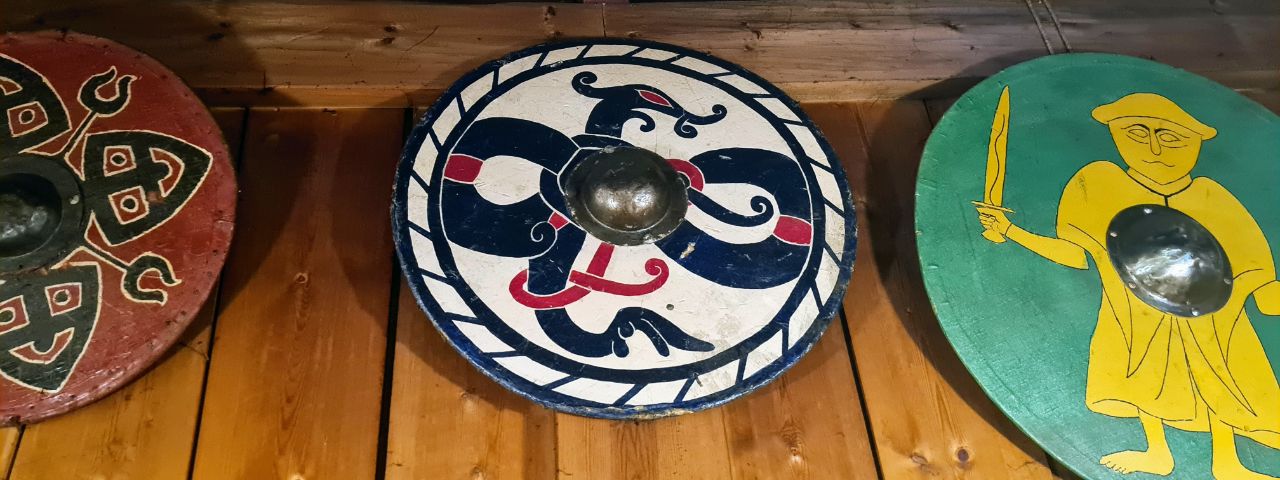This morning, we stood at the edge of the world. Yes, we actually traveled that far. Verdens Ende (“World’s End”) boasts its ancient lighthouse, built in 1934. Parking requires payment, but if you’re happen to be nearby, swing by—if only for the dramatic name. After all, how often can you brag about standing at Earth’s edge? However, our main topic today revolves around Midgard.
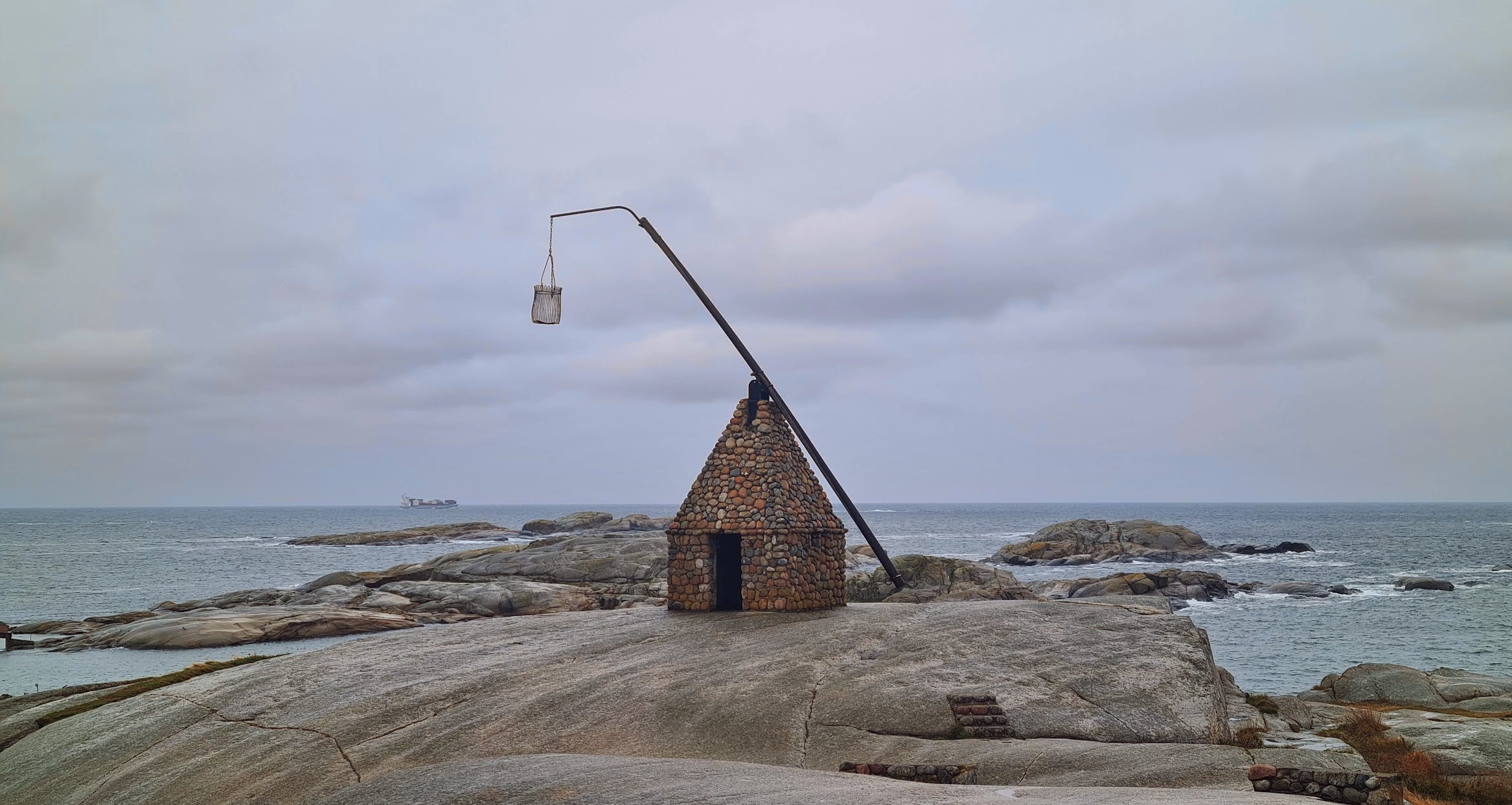
In the nearby town of Sandefjord, you can once again transport yourself to Viking times. Here, on Gokstad hill, archaeologists unearthed the largest Viking longship ever discovered. Experts believe this served as burial goods for a powerful Viking chieftain. Besides the ship, they found:
- 12 horses. Because one clearly wouldn’t suffice. A single steed in the afterlife equals a bicycle on a highway
- 6 dogs (gotta prepare for the afterlife hunting season)
- A peacock (because even in Valhalla, style matters)
- A Hnefatafl game board (because eternity without board games would bore even the mightiest warrior)
- 3 smaller boats (so the fleet wouldn’t look too pathetic)
- And one poor archaeologist who had to catalog it all.
In 1893, a Gokstad ship replica—brilliantly named “Viking”—successfully crossed the Atlantic Ocean, demonstrating Viking vessels’ maritime capabilities. With little else to see there, we instead venture to experience Midgard. Not Midgard in the broader cosmic sense, but the Viking center nestled beside more burial mounds near Horten town. We’ll examine Vikings from another angle. Fasten your seatbelts, grab your horned helmet, attach a ginger beard, smear some paint on your face, and let’s begin our quest for Valhalla!
Vikings and Norway go together like Easter and eggs, hammer and sickle, Mulder and Scully, whiskey and cola. You get the picture. Vikings stirred up half the world from Baghdad in the east to North America in the west. That’s what I call bersek mode.
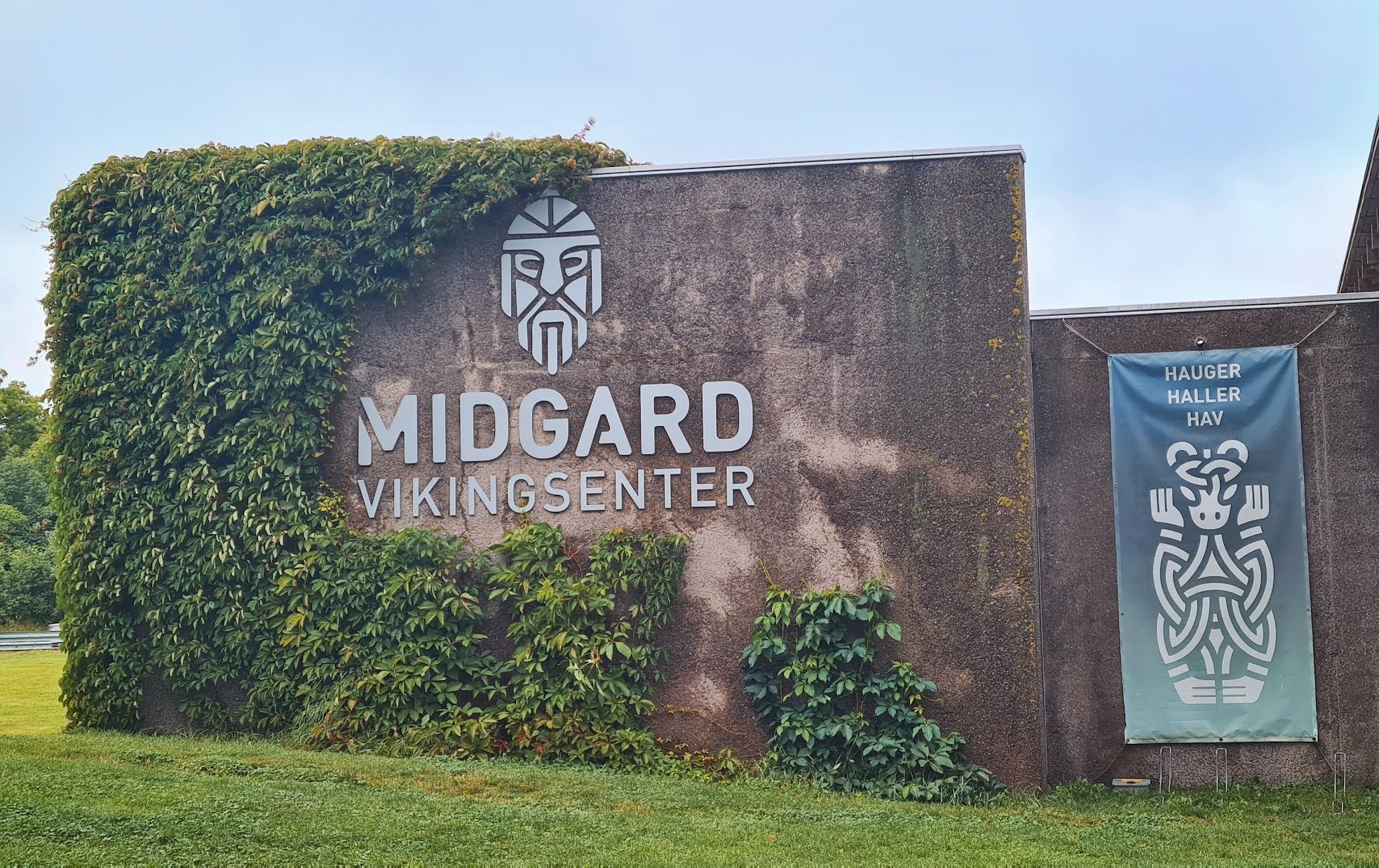
According to Viking mythology, Yggdrasil, the sacred ash tree, centers everything. This tree sports nine branches protecting nine worlds (Asgard, Jotunheim, Niflheim, Midgard, Vanaheim, Alfheim, Svartalfheim, Muspelheim, and Helheim itself). Quite the apartment complex! An eagle perches at the tree’s top, a dragon coils around its roots, and somewhere in between, a squirrel, a goat, and four deer make themselves at home. In short, never a dull moment. I suspect Yggdrasil eagerly awaits Ragnarok just so everyone will leave it alone.
Another beautiful legend suggests the Northern Lights actually form a bridge between Midgard (Earth) and Asgard, the gods’ residence. Marvel movie fans recognize the names Odin, Frigga, Thor, Hela, and Loki. I hesitate to touch these ancient deities—there’s so much going on that even Loki would break a leg trying to navigate through it all.
The Borre burial ground represents one of Norway’s most significant Viking-era archaeological sites. It contains about 30 large burial mounds used for Viking leaders and other important individuals. These mounds arrange themselves in lines and groups, revealing specific social structures and hierarchies within society.
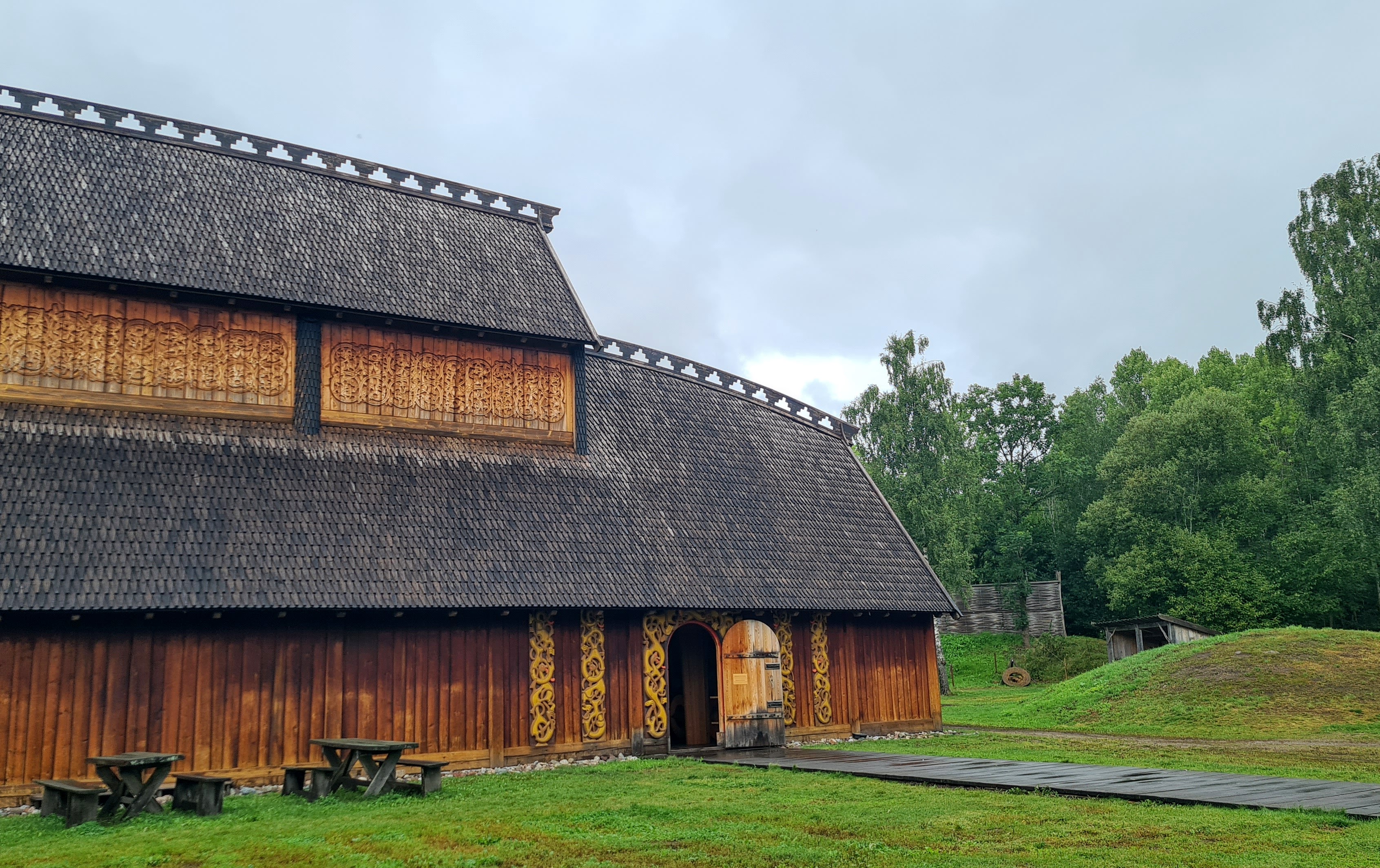
This society had three classes: thralls, karls, and jarls. Thralls equated to slaves, possessing fewer rights than a Viking ship’s oars. Karls lived as free peasants, while jarls formed best of the best. They devoured the finest food, drank the strongest mead, and had the most magnificent beards.
Vikings significantly influenced Europe by building and plundering, trading and plundering, exploring and plundering, traveling and plundering. Basically, lots of plundering occurred. But what occupied them between plundering sessions? Vikings contributed to founding Dublin and Cork. York once served as a Viking capital right under English noses. Almost all Anglo-Saxons suffered—only Wessex escaped. Normandy (northman) also stems from Viking heritage, as the name itself encodes.
Viking influence on Anglo-Saxon culture left some notable marks. Even English weekday names derive from Viking gods. Thursday originally meant Thor’s day, while Friday honors Frigg (or Freyja). Tuesday belongs to Tiw or Tyr, Wednesday to Woden (another name for Odin). One exception: Saturday, named after the god Saturn.
Not only Anglo-Saxon culture bears Viking imprints. Byzantine emperors hired Vikings as personal bodyguards. One such guard likely left graffiti on Hagia Sophia, writing “Halfdan carved these runes”—proving some traditions never die. Vikings traded fish, honey, leather, walrus tusks, and even narwhal horns, potentially spawning the unicorn myth.
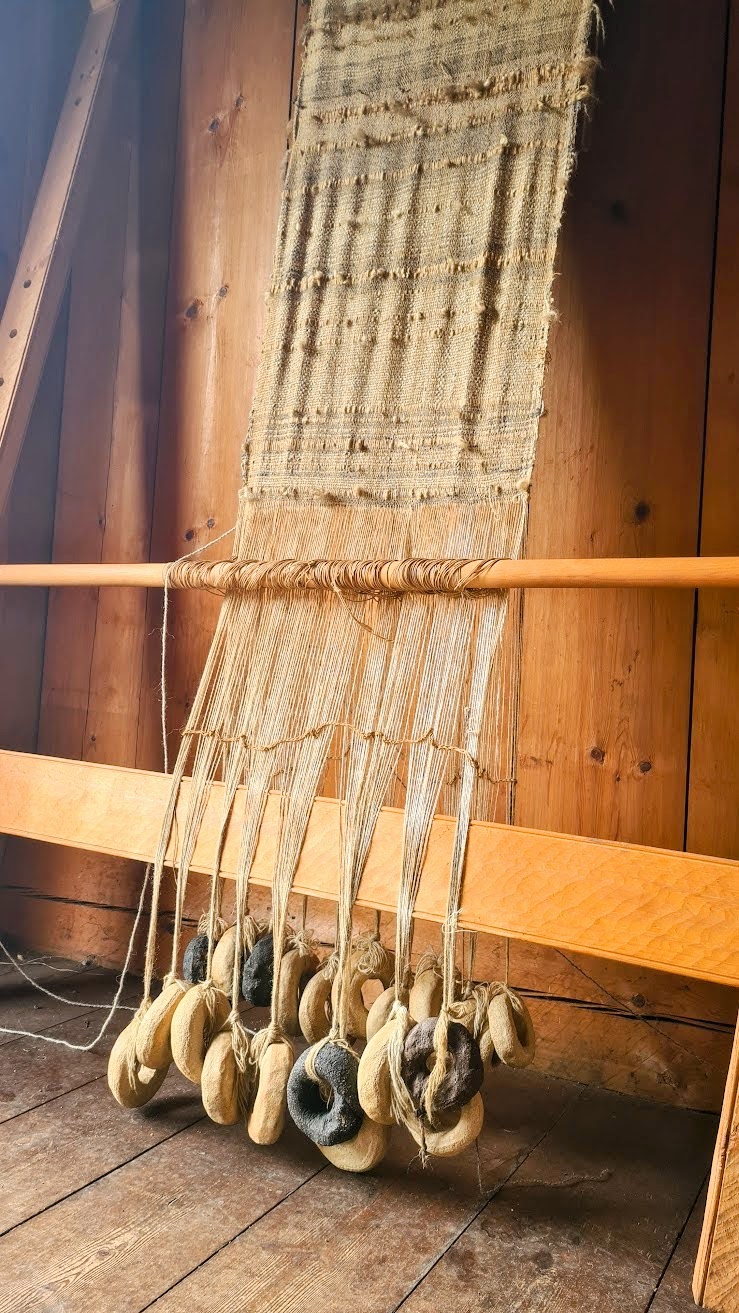
Now for Norway’s most important Vikings. I’ll save Ragnar Lothbrok and Lagertha for our evening Netflix sessions after long travel days. Rollo supposedly hailed from Norway—perhaps our next journey will explore his Norwegian connections and Normandy. Harald Fairhair, whom I mentioned earlier, ruled significantly. Other notable Norwegian Vikings include Erik the Red, who discovered Greenland, and his son Leif Erikson, who found North America. The apple doesn’t fall far from the tree…
Midgard (the museum) proudly showcases a reconstructed Viking house. It functions as a time machine to the past. Here, visitors experience Viking life: sit in the great hall and try the jarl’s chair, spin wool, and practice archery outside. The Viking era marked a time when beards grew long, journeys stretched longer, and tales of heroic deeds extended longest of all.
Much more could be said about Vikings and Midgard, but we must move on. Midgard recedes behind us as we pay 300 NOK and board the ferry to Moss. On the opposite shore awaits 19th-century history—a period when Vikings transformed from neighbors’ nightmares into museum exhibits.

